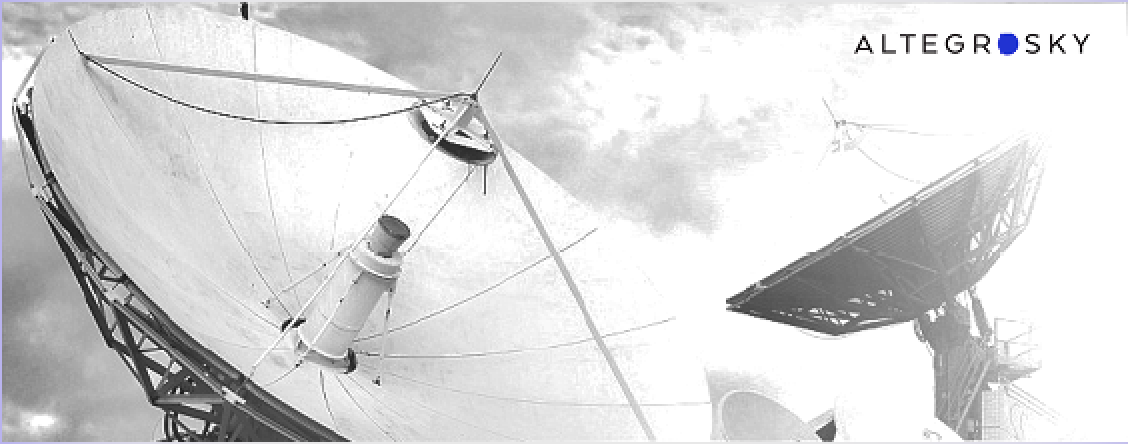Amplitude and phase-shift keying This article presents estimations of the StarLink constellation bandwidth, obtained on the basis of open data that includes public statements by SpaceX specialists, documents submitted to the FCC and data from StarLink`s users.
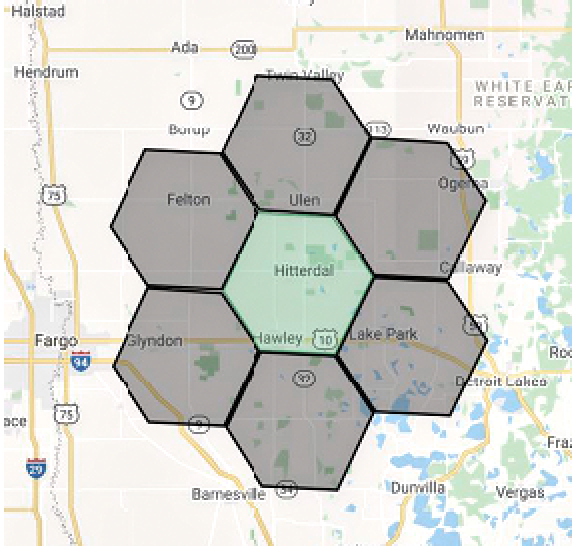
Geography
The diameter of the cell on the surface of the Earth to which the beam from the satellite covers is 15 miles (24.13 km.). The StarLink network uses a hexagon inscribed in a 15-mile circle to plan its solid coverage, with an area of 379 square kilometers.
Demography
In rural areas of In the United States, 57.23 million people live in rural areas and the average household size is 2.53 people. Thus, on average, 5,339 people live in one cell in rural areas within which are 2,110 houses. The available bandwidth of StarLink satellites to user terminals is 2000 MHz in the Ku-band and 500 MHz from the terminal to the satellite. The documents filed with the FCC1 talked about the possibilities of working with modulations from BPSK to 64QAM.
FCC (1) talked about the possibilities of working with modulations from BPSK to 64QAM.
There are two polarizations available on the satellite.

Number of cells for different situations
1 At 2000 MHz and 64QAM FEC = 0.873 (= 8/9), we will get the total throughput of one StarLink satellite, 2000 x 2 x 5.11 = 20.22 Gbit, which is fully consistent with the known data, including the first SpaceX application sent to the FCC in 2016.
2 The UT-1 user terminal operates in a 240/62 MHz channel3...
3 ...and only in one (right) polarization. Therefore, 8 beams can work simultaneously on one satellite in one polarization. We will estimate how many satellites are needed to ensure 100 percent coverage of any part of the Earth using a service that is based on a UT-1 type terminal.
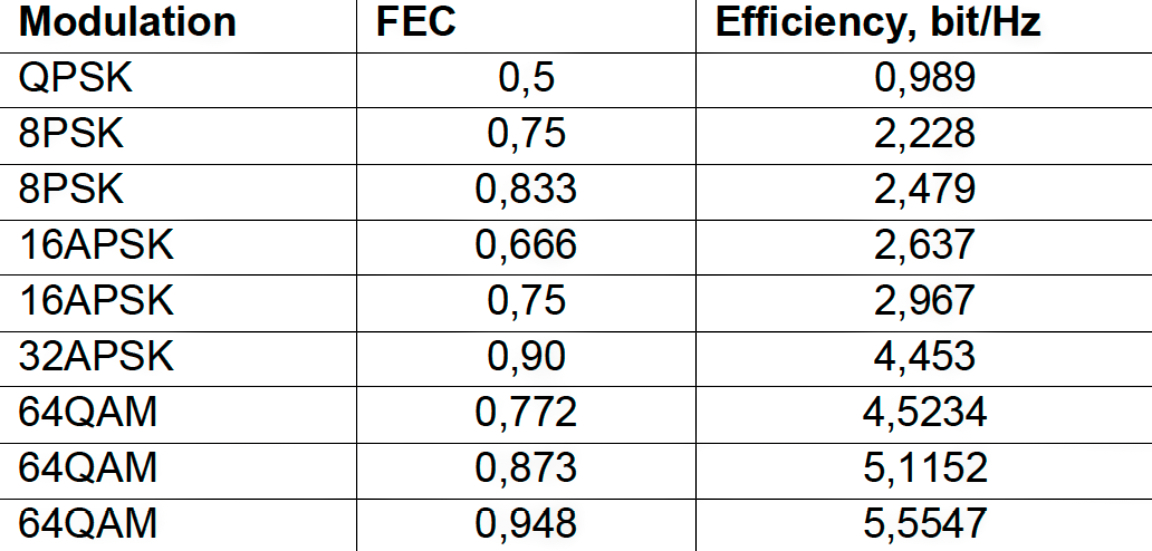
Spectral efficiency for different types of modulation2
For 100 percent coverage of the rural area of the United States, 1,341 satellites are required and, as of this writing, there are now there more than 1,400 satellites on-orbit. However, everything is not so simple as all satellites are relatively evenly distributed over the entire surface of the globe — the territory of the continental United States occupies only 2.55 percent of Earth’s territory between the 53 parallels.

Let us estimate how many satellites are available for service over the United States at any given moment. To do this, we will use the www.starlink.sx service (many thanks to the site’s creators). Note that the density of satellites over the United States is uneven, depending upon the latitude of the subscriber. Estimation of the number of satellites available, depending upon the latitude covered by the satellite beam, is 15 miles (24.13 km.).
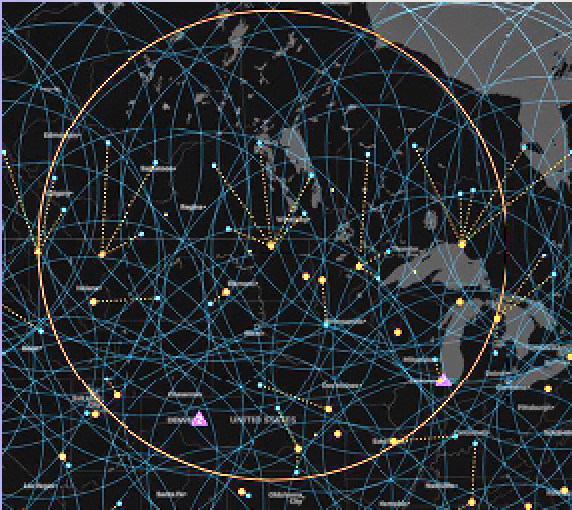
North. Gateway at Rolette, North Dakota,
latitude 48.7, circle radius is approximately 1245 km.
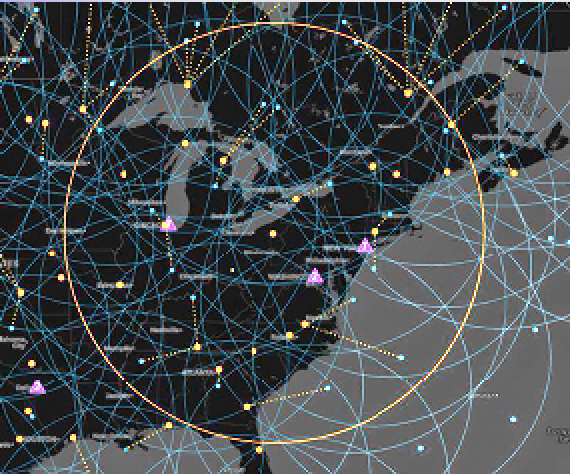
Center.
Gateway at Greenville, Pennsylvania,
latitude 41.4, circle radius is 1168 km.
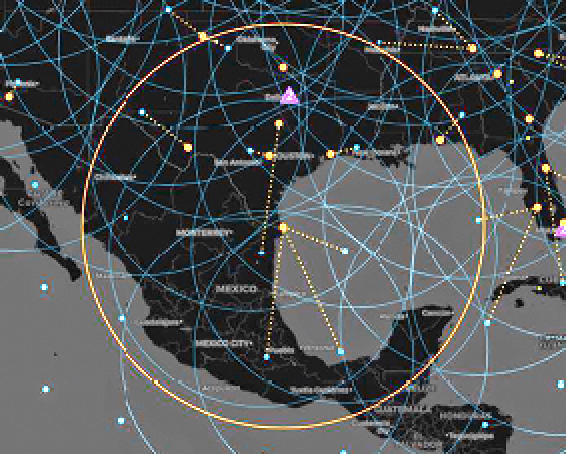
The south.
Gateway in Boca Chica, Texas,
latitude 26 degrees., circle radius is approximately 1060 km.
Blue dots are active satellites, yellow dots are Gateways. Images were captured on September 3, 2021, for the position of the constellation, with 1,282 satellites having reached their final orbit on that day. As the StarLink constellation is constantly growing, the number of satellites may be larger as of this writing.

Let us estimate the “density” of the satellite coverage for different latitudes, It is obvious that the chance of obtaining StarLink service for those living in the North of the U.S. is 70 percent higher than for those who live in the southern portion of the country.
To provide service only to the rural areas of the United States, (53 percent of the U.S.), 1,549 satellites (100 percent of Phase 1) are required.
In total, it turns out that in the best case, even in the northern regions of the United States, only 1 cell out of 29 (less than 4 percent) is available in rural areas that would be addressed by the service with the full deployment of the first phase of the StarLink constellation.
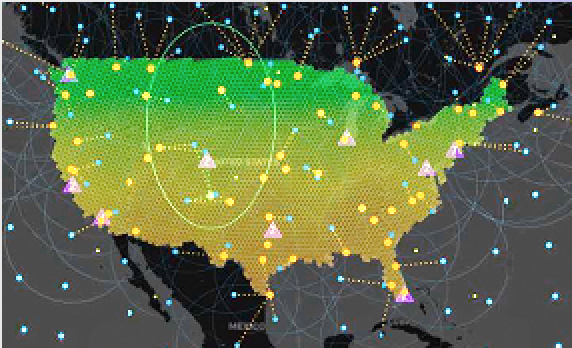
The data in the image above corresponds to the full coverage
of the United States.
The mission of SpaceX includes full coverage of the Earth, without which it will be impossible to organize roaming for ships and aircraft, so there must be a solution.
First, it is possible to exclude a number of unpopulated areas or areas where there are no shipping routes or airways from service. The re- targeting time of a phased array antenna is only 5-10 microseconds (4,000 times less than the latency in the Starlink network). This allows beam hopping a single beam to serve sequentially several cells in turn.
Then, depending on how many cells are included in one service cycle, it is possible to increase the number of cells where the service is provided by 2 to 5 to 10 times or more.

For 4,408 satellites, v.1.0 Ku-/Ka-band, and with a cycle of 1 beam per 10 cells:
At this point, the analysis of the possibility of providing global coverage for the StarLink service may be considered complete. Now let’s consider the necessary composition of the constellation from the point of view of traffic from subscribers.
The bandwidth of the StarLink satellite will be 20 Gbps when operating in two polarizations and with 64QAM (Quadrature Amplitude Modulation). Now, the network can use only one polarization to work with UT-1 terminals.
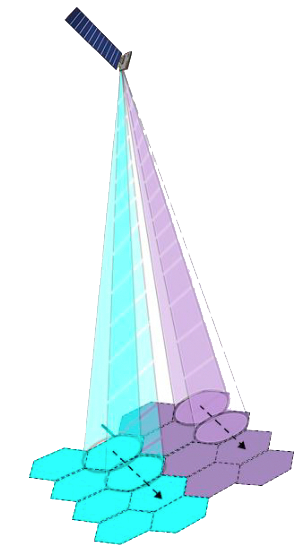
In addition, to work with 64QAM modulation, it is necessary to have a EbNo (a normalized signal-to-noise ratio measure) of more than 17 dB. However, currently the SNR (Signal Noise Ratio) parameter on the UT-1 terminal is 11 to 12.5 dB, which corresponds to 16 to 32 APSK (Amplitude and Phase-Shift Keying) and a maximum of 3,5 bit/Hz.
This is indirectly confirmed by tests of StarLink service: the record speed for the terminal was demonstrated in the spring of 2021 at the start of the provision of services in Germany, where the number of subscribers per a single cell was minimal and one subscriber could use the entire bandwidth of the beam: territory), then with 1,584 satellites (100 percent of phase 1).
We can proceed from the assumption that all users in the same cell should share approximately 840 Mbit if the beam serves only 1 cell and 240 Mbit if the beam uses beam hopping and serves 3 cells. Let’s analyze how much traffic can be downloaded by one StarLink subscriber.

Let’s assume that the needs of StarLink users will be similar. For five hours (between 6:00 and 11:00 p.m.), users download an average of 5.87 GB. Let’s assume that 85 percent of this traffic is from the internet — then we need 2.27 Mbit per second to download such a volume of traffic.
It should also be taken into account that there are peak moments of consumption, such as premieres on Netflix or the Super Bowl. The practice of Operators do not allow an average network load of more than 70 to 80 percent, in order to avoid degradation of the service during such periods of peak time.
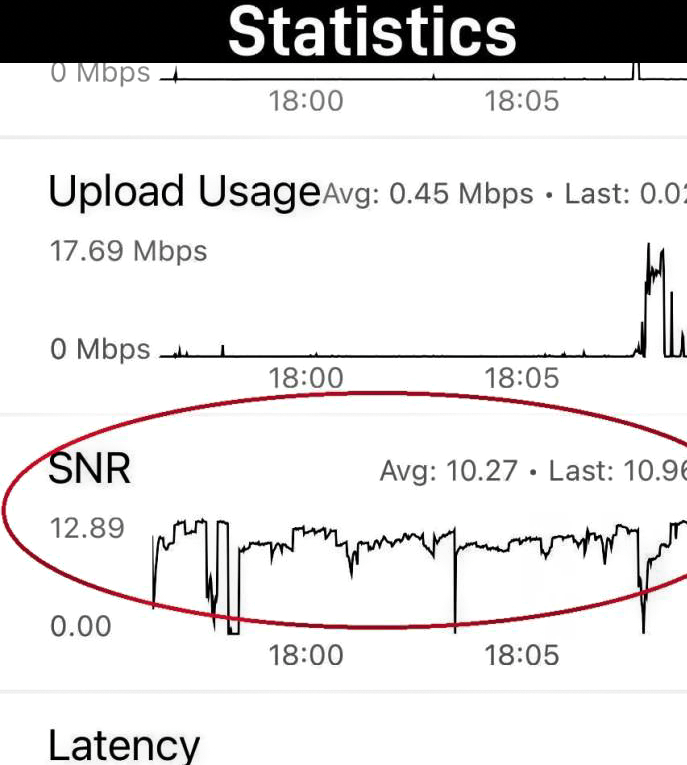
Let’s assume that the average network load is 80 percent of its full capacity. In this case, the cell has 672 Mbit, which can serve 296 subscribers, or 14 percent of potential subscribers living in the cell. To serve a larger number of subscribers, you need to use the second, third, and so on, the beam of the same or another satellite but always on a different frequency.
An estimate of how many satellites are needed to serve 500,000 users in the continental United States would be 500000 / (8x296) = 211 satellites when using UT-1.
With a uniform distribution of satellites over the Earth’s surface, and taking into account only the U.S. territory (2.55 percent of the Earth’s surface),the constellation should include 315 / 2.55% = 8,274 satellites. However, as satellites located at a distance of 300 to 500 km outside the borders of the United States (over the oceans, Canada or Mexico, the same can serve the territory of the United States. Additionally, over the northern border, the density of satellites is almost twice as high as in the south. We assume that the territory of the continental United States can be served by 5 percent of the satellites in the constellation, and in this case, the constellation should consist of 4,229 satellites.
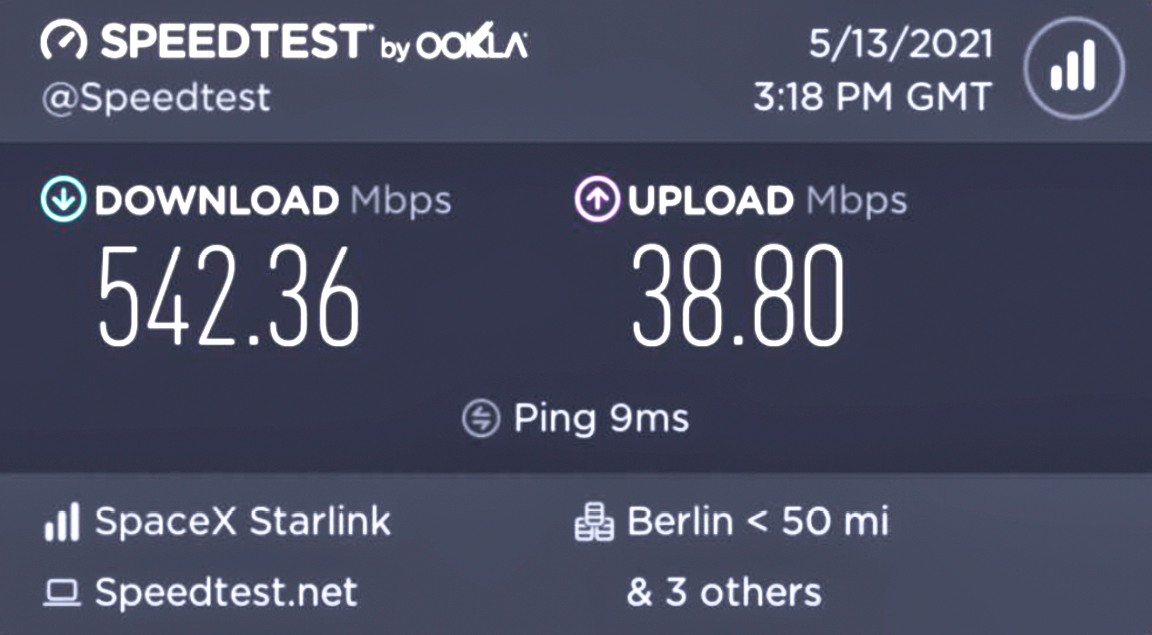
You can also count down how many users in the continental United States can be served by a fully deployed StarLink Ku-band constellation — 4,408/4,229 x 500,000 = 521,000 active users. Taking into account Alaska, Hawaii, Canada, Europe and other countries, it will be possible to talk about a million users. Let us repeat that — the calculations were carried out for the current model of the UT-1 terminal and the traffic consumption profile of users in the USA.
The StarLink constellation of the first phase of 1,584 satellites deployed as of this writing can serve 187,000 subscribers in the continental United States with the previously indicated traffic consumption profile. The maximum subscriber base will be reached in 4 to 6 months, but the free capacity will be outside the continental United States.
In the absence of data on real traffic consumption and taking into account the fact that users connected now to the StarLink service previously used low-speed connections (1..5 Mbit), it is possible that they have not yet formed a need (habit) to use programs that require high-speed internet and consuming large amounts of traffic. In this case, the time when the traffic consumption of StarLink subscribers reaches the U.S. average level can take up to 6 to 12 months, during which the traffic consumption will reach the U.S. average level.
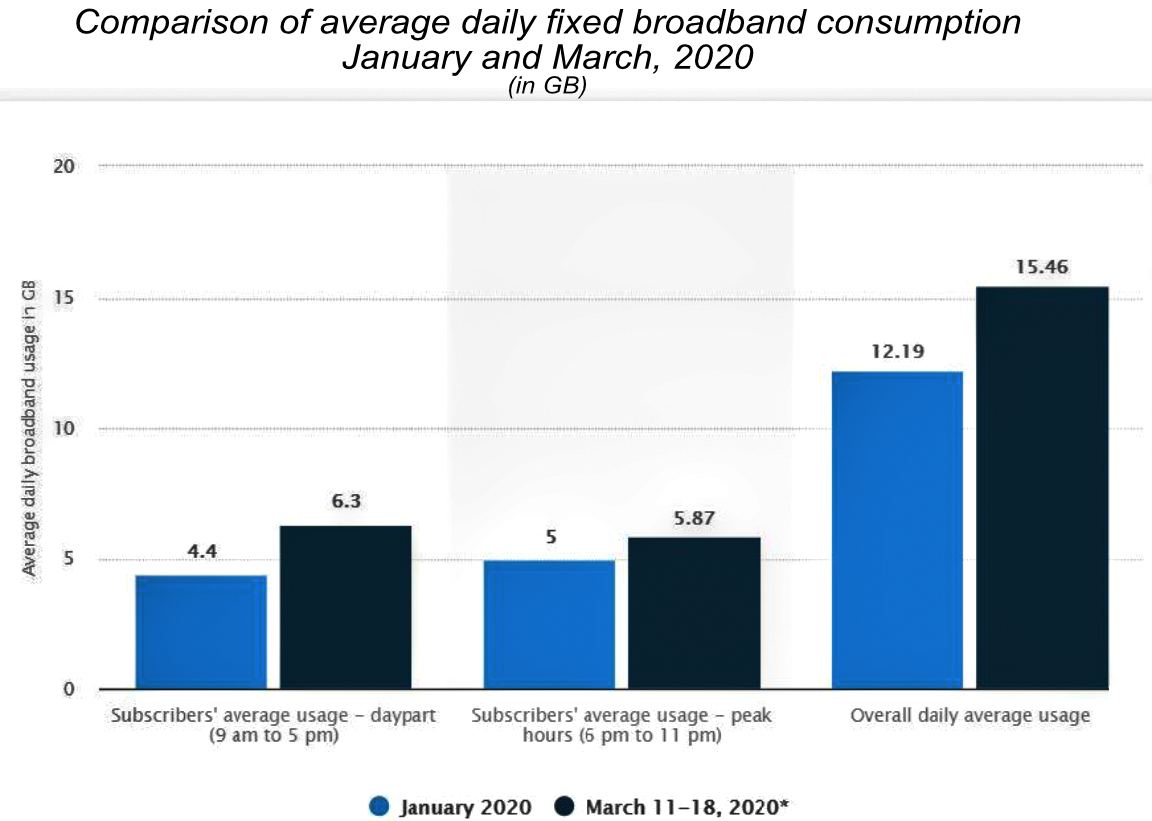
Actual data on traffic consumption by subscribers in the USA for 20204.
Another reason why traffic consumption in the StarLink network may be less is that the network is currently in beta testing mode and some subscribers use StarLink in parallel with their old provider, thereby reducing the load on the StarLink network.
If, in the future, SpaceX will publish the number of active users (and ideally the average traffic consumption per a single subscriber) by the countries of its presence, then it will be possible to check the estimates with the actual situation.
References
1 See Space Exploration Holdings, LLC, Request for Modification of the Authorization for the SpaceX NGSO Satellite System, IBFS File No. SAT−MOD−20200417−00037, filed April 17, 2020 (SpaceX Third Modification Application).
2 https://www.semanticscholar.org/paper/CQI-table-design-to-support-256- QAM-in-small-cell-Mu-Liu/af2d01d0974af4e60d5714cc96fdfcc31114f9f1/ figure/10
3 https://fcc.report/IBFS/SES-LIC-20190211-00151/1619048
4 https://www.statista.com/statistics/1106765/covid-19-us-average-daily- broadband-usage/

Author Dr. Sergei Pekhterev started his career in the satellite communications industry in 1993. He has been actively involved in the construction of satellite communication networks in the CIS: in Russia, Kazakhstan, Uzbekistan, and Georgia. He led the VSAT direction of the Romantis project (a joint project of Dornier Daimler Benz Aerospace, ANT Bosch Telecom and Deutsche Telekom) and later in DeTeSat (Deutsche Telecom Satellite). In 2003, he together with his partners started AltegroSky, of which Dr. Sergei Pekhterev became the CEO. During his leadership, AltegroSky became the largest private provider of satellite communication and broadband Internet in Russia. Currently he is Chairman or Member of the Board of Directors in AltegroSky, Ka-Internet and Astra Internet (all companies are Russian satellite providers operating in various market segments B2B, B2C, B2O).
AltegroSky provides a wide range of cutting-edge telecommunication services and solutions for commercial organizations, telecom operators and government: high-speed satellite Internet access, VoIP, corporate networking, telemetry, video and audio conferencing, video surveillance, multicasting, mobile VSAT (including Maritime), backup communication links, dedicated backbone satellite links, ground station lease. Having a huge expertise in satellite communication we can also propose to build satellite infrastructure for provisioning of communication services and also to suggest managing Satellite Operational Centers (NOC, Hub) for other providers and Clients having such Centers.
